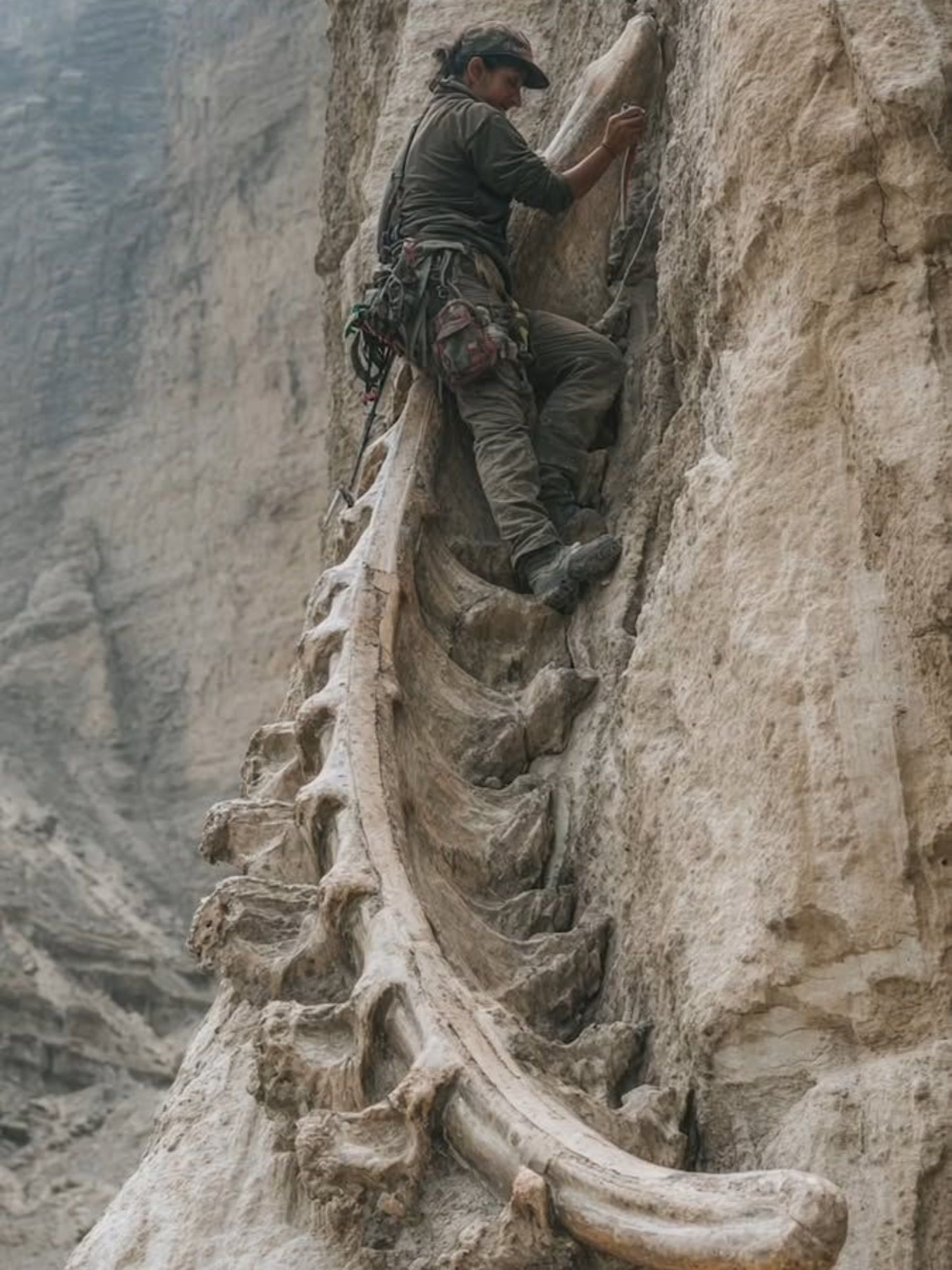Beyond Bones: The Science of Deep Time
Paleontology is far more than the search for giant bones. It is the science of reading Earth’s own autobiography — a record written in stone, bone, and ancient sediment. Each fossil tells a fragment of a vast story stretching hundreds of millions of years, revealing how life has adapted, thrived, and vanished under changing skies and seas.
Dinosaurs capture our imagination not just because of their scale or power, but because they are among the greatest storytellers in natural history. Through their remains, scientists reconstruct the climate systems, ecological networks, and evolutionary experiments that shaped our planet long before humans appeared.
To study dinosaurs is to study ourselves — to see how life on Earth responds to catastrophe, transformation, and renewal.
Fossils: Messages from Deep Time

Every fossil is a time capsule, preserving a moment when the Earth was profoundly different. The bones, shells, and imprints we uncover are not static relics; they are data points in a story of climate shifts, volcanic upheavals, and biological innovation.
By examining fossilized remains, paleontologists can determine how ancient species responded to extreme environments — droughts, greenhouse climates, rising seas, or sudden cooling. These lessons are invaluable today, as modern species confront rapid environmental change.
The dinosaur record, for instance, reveals a dynamic world. During the Mesozoic Era, supercontinents broke apart, new oceans formed, and atmospheric carbon levels soared. Tropical forests reached the poles, and enormous reptiles adapted to every niche. For over 165 million years, life flourished in conditions unlike any we know — until it didn’t.
The Asteroid and the Aftermath
Around 66 million years ago, an asteroid roughly six miles wide struck near what is now Mexico’s Yucatán Peninsula. The impact unleashed global fires, tsunamis, and a “nuclear winter” that darkened skies for years. Seventy-five percent of Earth’s species vanished, including nearly all dinosaurs.
Evidence of this catastrophe is preserved in a single, thin layer of rock found across continents — a global signature rich in iridium, an element rare on Earth but common in meteorites. This layer is the dividing line between two eras: the Cretaceous and the Paleogene.
That iridium-rich band links a single event in Mexico to a planetary extinction. It is one of the clearest reminders in geology that everything on Earth is connected — oceans, atmosphere, and all living things.
Lessons Written in Stone

The story of the dinosaurs is not one of failure, but of endurance. They thrived for an unimaginable span of time, adapting to new climates, predators, and prey. Their extinction was not the result of weakness, but of overwhelming change that reshaped every ecosystem on the planet.
For scientists today, that story holds powerful parallels. Modern biodiversity is facing pressures similar in scope — climate shifts, habitat loss, and mass extinction events driven by human activity. By studying how past species adapted or perished, we gain perspective on how fragile and resilient life can be.
Dr. Luis Chiappe of the Natural History Museum of Los Angeles describes fossils as “mirrors of survival.” They show not only what was lost, but how life rebounds, diversifies, and reclaims the Earth after collapse.
Connecting Past and Present
In many ways, paleontology is as much about the future as it is about the past. The methods used to interpret fossil records — isotope analysis, sediment chemistry, computer modeling — help predict how modern ecosystems may respond to rapid warming or ocean acidification.
Studying ancient mass extinctions gives scientists clues about how long recovery takes after environmental collapse. After the asteroid strike, it took millions of years for biodiversity to return to pre-impact levels. That long timeline underscores the urgency of protecting species now, before losses become irreversible.
Dinosaurs, through their fossils, remind us that Earth is both resilient and vulnerable. Catastrophe can strike suddenly, but recovery demands time — far more than any human lifespan.
A Message for Our Time
The thin layer of iridium in rocks around the world is more than just geological evidence; it is a cosmic signature of how connected our world is. A single event in one region altered the entire planet’s climate and life systems.
Today, the same global interconnectedness defines our own crisis. Pollution, deforestation, and greenhouse gases cross borders and oceans just as swiftly as the asteroid’s fallout did. The difference is that this time, the impact is not from space — it is from us.
The fossil record reminds us that extinction is not abstract. It has happened before, and it can happen again. But it also shows that life, given the chance, evolves, adapts, and endures.
The Eternal Conversation Between Past and Future
Paleontology is, ultimately, the study of continuity. It teaches that life’s story is not linear but cyclical — periods of flourishing followed by collapse, followed by rebirth. Each fossil we unearth is a piece of that rhythm, connecting our present to an unimaginably ancient past.
To look at a dinosaur bone is to glimpse our planet’s resilience — and its fragility. It’s a reminder that every living thing today, from coral reefs to rainforests, is part of the same unfolding narrative.
The story of the dinosaurs is not just a record of extinction; it is a blueprint for survival.
Sources
- Smithsonian Magazine – “The Day the Dinosaurs Died”
- National Geographic – “How the Dinosaurs Really Died”
- BBC – “The Dinosaur Extinction That Changed the World”
- The Guardian – “What the Extinction of the Dinosaurs Can Teach Us About Today’s Planetary Crisis”